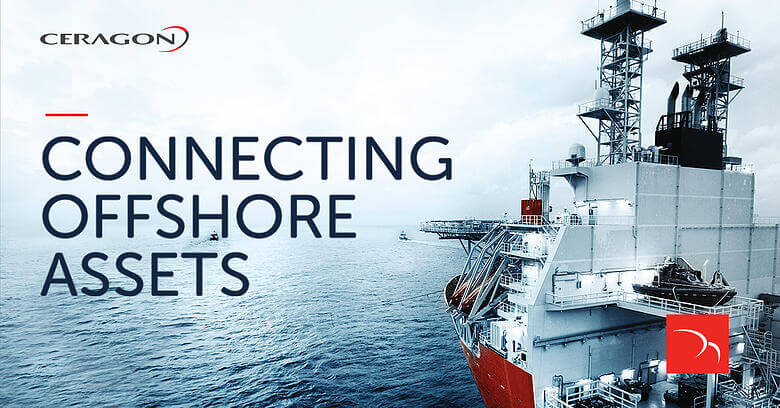Communication needs have evolved due to the global pandemic, which has emphasized the urgency and need for low-latency, high-capacity connectivity across all sectors, including the energy sector.
In part 1 of our blog, Why wireless communications will play a major role in the energy sector, we established that wireless communications is set to play a major role in the energy sector as it offers both the low-latency and high-bandwidth communications needed – quickly & cost-effectively. In this blog, we’ll discuss the unique connectivity challenges faced by the offshore energy sector and how Ceragon’s wireless PointLink solutions address these challenges head-on.
Equipment Exposure to Harsh & Hazardous Environments
The conditions in which offshore networks need to be deployed and run present a major challenge. The communication equipment is continuously exposed to harsh weather conditions, such as saltwater spray and is deployed in hazardous environments. When selecting equipment, you must carefully examine its robustness and durability to ensure it can withstand such conditions over time.
Ceragon’s solutions are designed to endure the toughest conditions. The IP-20C and RFU-D radios certifiable for installation in ATEX/IECEx Zone 2 areas without the need for any special enclosures. These radios also have a special coating to withstand harsh and corrosive environments.
In the toughest environments, where Zone 1 areas are involved, Ceragon’s radios are placed in a specially designed ATEX Zone 1 enclosure (as shown in the graphic below illustrating different solutions).
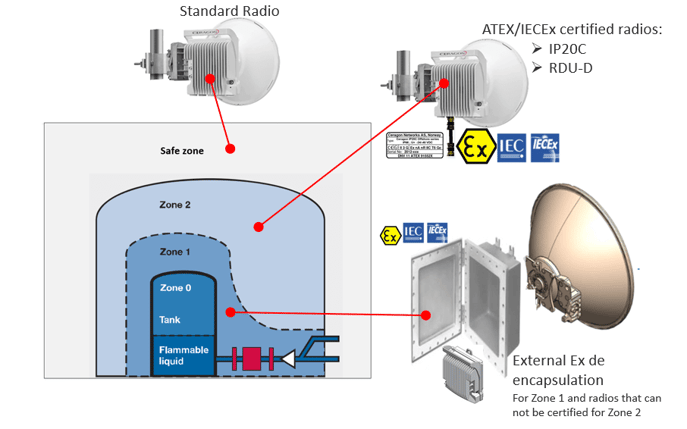
Wave and Current Movements
When deploying microwave radios with directional antennas on floating installations, the movements (heading, pitch and roll) of the hull due to ocean waves and currents can make the antenna beam point “off target.” For these applications, a stabilized antenna system is required.
Ceragon’s PointLink™ family of stabilized solutions ensures that the antenna beams are constantly aligned with the target when the vessel moves by moving the antenna in opposition to the vessel's movement. This ensures link continuity.
The PointLink™ solutions come in different sizes to accommodate varying link distances.
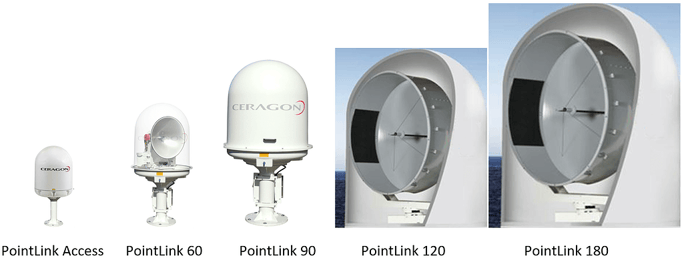
The PointLink 60 solution and the larger solutions can be installed in hazardous ATEX Zone 1 and Zone 2 areas, while the smallest solution (PointLink Access) is appropriate for installation in non-hazardous zones.
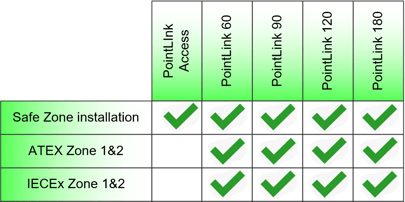
Let's discuss a use case, where there exists a fiber link to a first asset. In such a scenario, there are advantages of using wireless technologies to “hub and spoke” the connectivity to other assets in the area, such as surrounding platforms or incoming vessels. The ideal candidate for that is the smallest PointLink solution, PointLink Access. This solution, like the larger PointLink solutions, can compensate for the movements of the vessels and ensure that the antenna is always pointing to the right location.
The PointLink Access is radio-agnostic and can carry a wide variety of signal bearers. In cases of a rotating vessel, the challenge is to maintain continuous alignment. The solution is to have a dual installation (as shown below).
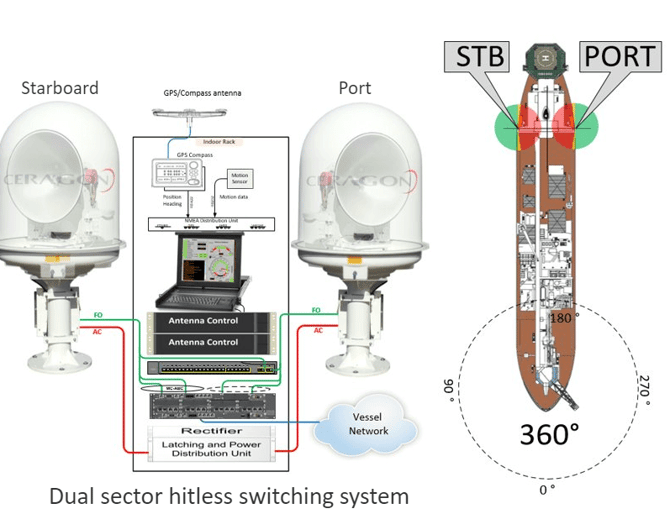
The main advantage of a dual-installation system is that regardless of the movement or rotation of the vessel, the link is always aligned, thereby ensuring that there are no traffic drops. To further improve the availability of the link, we could deploy a solution incorporating space diversity.

5G will eventually make its way into the energy sector. Since PointLink Access is a radio-agnostic product, it’s also able to carry traffic over 5G - making it future-proof as it meets the industry needs of today and tomorrow.
In summary, Ceragon’s specialized Kinetics solutions deliver reliable, turnkey wireless communications for moving onshore/offshore assets and harsh environments. Our stabilized PointLink solutions offer the utmost safety, reliability, capacity, range, rapid deployment, and cost-effectiveness.
Want to learn more?

